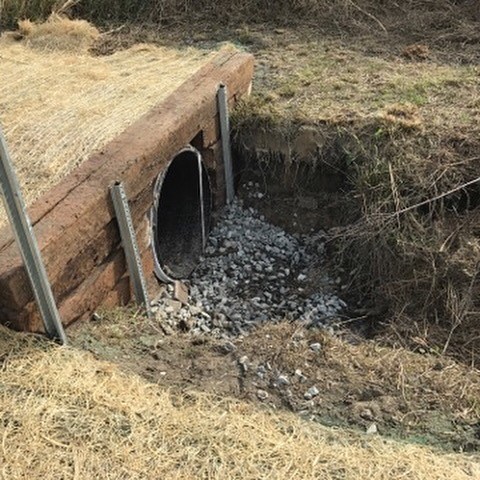Thorough Underbrush Clearing for Land Management
Thorough Underbrush Clearing for Land Management
Blog Article
Culvert Setup Facilitated: Step-by-Step Overview for Success
Setting up culverts may seem like a straightforward job, yet making sure an effective end result needs cautious preparation and implementation. From picking the appropriate culvert size to incorporating correct drain steps, each action in the installment procedure plays an important role in the capability and durability of the culvert system. By following a systematic method and paying interest to vital information, the installation can continue efficiently, minimizing potential issues down the line. Stay tuned to uncover the important steps and considerations that can make culvert installment a seamless and effective undertaking.
Selecting the Right Culvert Dimension
Selecting the proper culvert dimension is important for ensuring effective water circulation and structural stability in culvert installation tasks - Pad Construction. The dimension of the culvert directly affects the circulation capacity of water via the framework. A culvert that is too little can bring about flooding and overflow, while one that is too big might result in reduced water speed, potentially causing debris accumulation and obstructions
To figure out the right culvert size, variables such as the watershed area, height circulation prices, and hydraulic effectiveness need to be very carefully taken into consideration. Estimations based upon these parameters aid in choosing a size that can properly take care of the predicted water quantity while minimizing the risk of blockages and structural failing.
It is important to speak with engineering guidelines and requirements to make sure that the picked culvert dimension fulfills the task requirements and local policies (Pad Construction). By choosing the ideal culvert size, job supervisors can optimize water circulation, stop potential concerns, and enhance the general performance and durability of the culvert setup
Preparing the Installation Site
Reliable culvert installment necessitates meticulous preparation of the installment website to guarantee optimum architectural support and functionality. Prior to commencing the installment process, it is critical to remove the site of any debris, greenery, or blockages that could hamper the culvert's placement.
Additionally, it is essential to take into consideration aspects such as soil make-up, groundwater degrees, and ecological impacts when preparing the installation site. Carrying out a comprehensive website assessment can help identify any type of potential difficulties or risks that might affect the culvert's efficiency. By making the effort to prepare the installment site properly, you can assist ensure an effective culvert setup that satisfies architectural needs and guarantees long-term capability.
Placing the Culvert Properly

The quality at which the culvert is placed is vital for maintaining a correct slope for water flow. A steady slope assists prevent pooling and promotes efficient drain. Furthermore, the culvert needs to be oriented correctly to guarantee that the inlet and electrical outlet remain in the correct areas. This alignment is necessary for the culvert to work efficiently in managing water circulation.
Backfilling and Condensing the Soil
Appropriate backfilling and compaction of the soil around the culvert is important to ensure security and stop potential concerns in the future. When the culvert is properly placed, the next essential step is to backfill the location around it with ideal product.
After positioning the backfill product, it is very important to portable it in layers of uniform thickness. Utilizing a compactor or a mechanical tamper, small the dirt carefully to stay clear of harming the culvert. Compaction aids in minimizing the possibilities of settlement and makes certain uniform assistance around the culvert. It is crucial to compact the dirt evenly on all sides of the culvert to keep its structural integrity.
Proper backfilling and compaction not just supply stability to the culvert yet additionally help in preventing dirt disintegration and preserving the longevity of the culvert system.
Making Sure Proper Drain Assimilation
Integrating reliable drainage options plays a vital duty in the general performance and durability of culvert setups. Appropriate drainage integration is essential for managing water circulation, protecting against disintegration, and making sure the structural stability of the culvert system. To attain this, it is vital to develop a detailed water drainage plan that considers aspects such as the volume of water anticipated, the topography of the location, and the kind of dirt existing.

In addition, incorporating features like erosion control measures, such as riprap or vegetation, can additionally boost the efficiency of the drain system. By carefully intending and carrying out these drain options, culvert setups can work successfully and hold up against the examination of time.
Final Thought
Finally, proper culvert installation is critical for maintaining effective drain systems. By choosing the best culvert size, preparing the installation site, putting the culvert appropriately, backfilling and compacting the dirt, and making sure proper drain combination, success can be achieved. Complying with these steps will certainly aid guarantee the long life and effectiveness of the culvert, inevitably contributing to the total success of the drainage system.
Report this page